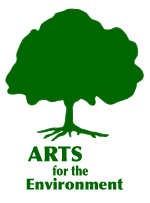“Corruption has appeared in the land and the sea on account of what the hands of men have wrought, that He may make them taste a part of that which they have done, so that they may return” (30, 41)
Lo! We offered the trust
Unto the heavens and the
Earth and the hills,
But they shrank from bearing it
And were afraid of it
And man assumed it
Lo! He is a tyrant and a fool
—The Koran 33:72 (quoted in Dien 110)
I was just doing research on Islam and the environment, a topic that Soraya, Ariff, Shahril and myself have discussed as a possible viewpoint of getting more people to participate in Arts for the Environment. I just found a nifty link below:
http://ddm.iatp.az/ddm/amazen.html
Religion and the Environment
In any case, we were thinking of adding some of these verses to the exhibit possibly? Will it take away from the message of the images/prints displayed? Or will it add to it?
The largest riverine mangrove system in Johor State, located at the estuary of the Sungai Pulai river. With its associated seagrass beds, intertidal mudflats and inland freshwater riverine forest the site represents one of the best examples of a lowland tropical river basin, supporting a rich biodiversity dependent on mangrove. It is home for the rare and endemic small tree Avicennia lanata, animals such as near-threatened and vulnerable Long-tailed Macaque, Smooth Otter and rare Flat-headed Cat and threatened birds species as Mangrove Pitta and Mangrove Blue Flycatcher, all included in the IUCN Red List. Relatively undisturbed parts including the Nipah swamps may be nesting sites of the Estuarine Crocodile. The site fringes play a significant role in shoreline stabilization and severe flood prevention in the adjacent 38 villages. The local population depends on the estuary as its mudflats, an ideal feeding, spawning and fattening ground, support a significant proportion of fish species. Other mangrove uses include wood cutting, charcoal production, aquaculture activities and eco-tourism. The current construction of a new port at the river estuary may represent a direct impact on the mangrove ecosystem, causing coastal erosion and water pollution from associated dredging and reclamation works and traffic. The site is managed in line with Integrated Management Plan for the sustainable use of mangroves in Johor state. Ramsar site no. 1288. (Reference)











